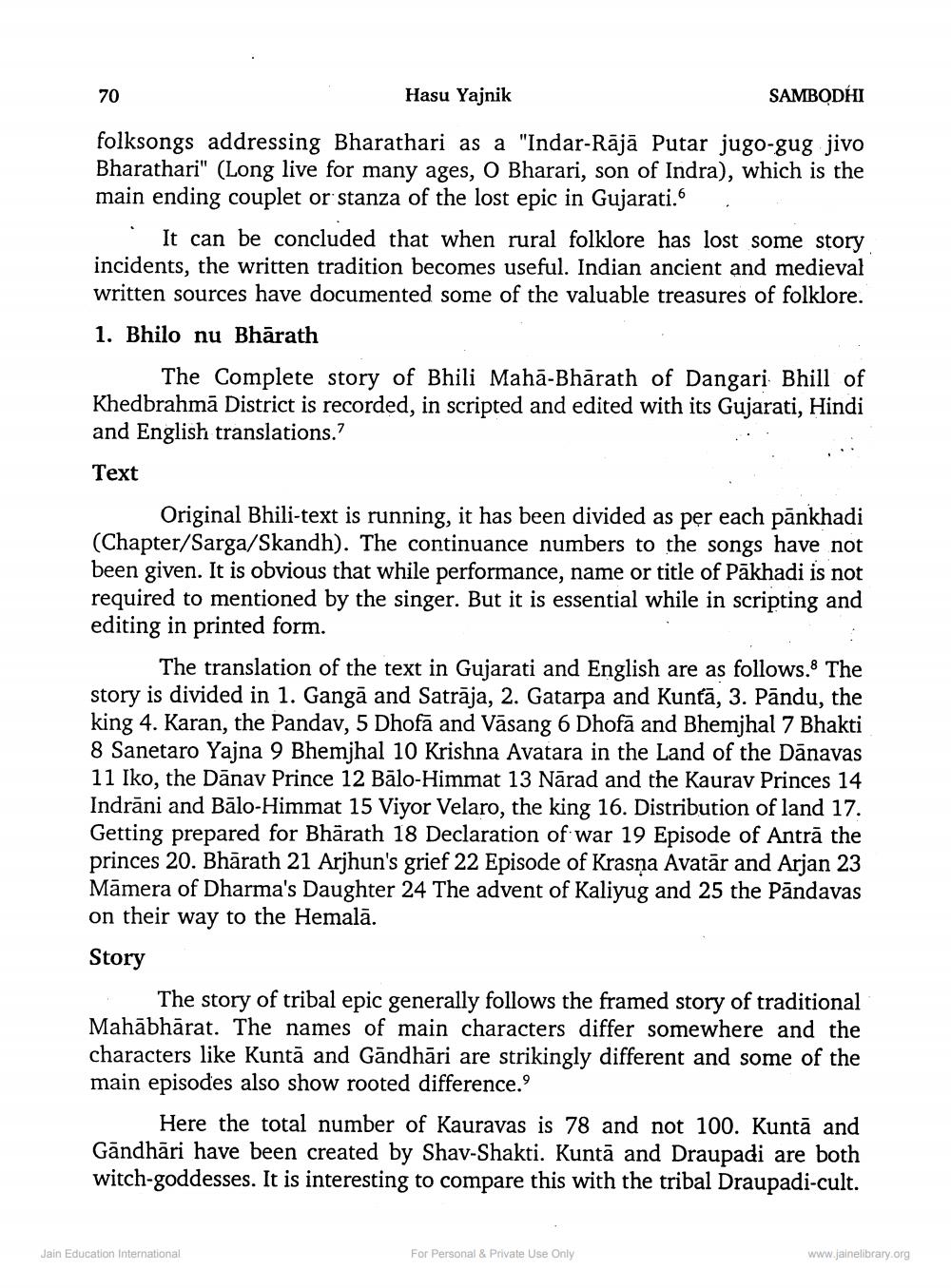________________
70
Hasu Yajnik
SAMBODHI
folksongs addressing Bharathari as a "Indar-Rājā Putar jugo-gug jivo Bharathari" (Long live for many ages, O Bharari, son of Indra), which is the main ending couplet or stanza of the lost epic in Gujarati. .
It can be concluded that when rural folklore has lost some story incidents, the written tradition becomes useful. Indian ancient and medieval written sources have documented some of the valuable treasures of folklore. 1. Bhilo nu Bhārath
The Complete story of Bhili Mahā-Bharath of Dangari Bhill of Khedbrahmā District is recorded, in scripted and edited with its Gujarati, Hindi and English translations.?
Text
Original Bhili-text is running, it has been divided as per each pānkhadi (Chapter/Sarga/Skandh). The continuance numbers to the songs have not been given. It is obvious that while performance, name or title of Pākhadi is not
ed to mentioned by the singer. But it is essential while in scripting and editing in printed form.
The translation of the text in Gujarati and English are as follows. The story is divided in 1. Gangā and Satrāja, 2. Gatarpa and Kuntā, 3. Pandu, the king 4. Karan, the Pandav, 5 Dhofā and Vasang 6 Dhofa and Bhemjhal 7 Bhakti 8 Sanetaro Yajna 9 Bhemjhal 10 Krishna Avatara in the Land of the Dänavas 11 Iko, the Dānav Prince 12 Bālo-Himmat 13 Nārad and the Kaurav Princes 14 Indrāni and Bālo-Himmat 15 Viyor Velaro, the king 16. Distribution of land 17. Getting prepared for Bhārath 18 Declaration of war 19 Episode of Antrā the princes 20. Bhārath 21 Arjhun's grief 22 Episode of Krasna Avatār and Arjan 23 Māmera of Dharma's Daughter 24 The advent of Kaliyug and 25 the Pāndavas on their way to the Hemalā.
Story
The story of tribal epic generally follows the framed story of traditional Mahābhārat. The names of main characters differ somewhere and the characters like Kuntā and Gāndhāri are strikingly different and some of the main episodes also show rooted difference.
Here the total number of Kauravas is 78 and not 100. Kuntā and Gāndhāri have been created by Shav-Shakti. Kuntā and Draupadi are both witch-goddesses. It is interesting to compare this with the tribal Draupadi-cult.
Jain Education International
For Personal & Private Use Only
www.jainelibrary.org




